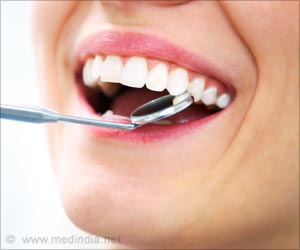The 'chewing robot' that scientists from University of Bristol have developed will help in studying dental wear formation on human teeth.
Dental elements, such as crowns and bridges, are made from well-known metals, polymers and ceramics but their dental wear properties are often poorly understood.The 'chewing robot' that mimics human teeth can help study dental wear and tear more precisely.
Clinical trials examining the wear of human teeth are expensive and time-consuming. By the time a new material has been tested, it is often obsolete.
The movements and forces involved in natural chewing action have been replicated in the Chewing Robot.
The robot is based on a three-dimensional mechanism with six linear actuators that reproduce the motion and forces sustained by teeth within a human mouth.
Lead researcher Dr Kazem Alemzadeh, recognised that the Stewart-Gough platforms have been used to provide and control the same six degrees of freedom in aircraft simulators, as is found in natural human jaw.
Advertisement
The robot has the potential to dramatically improve the process of developing and testing new dental materials.
Advertisement
Source-ANI
TAN











